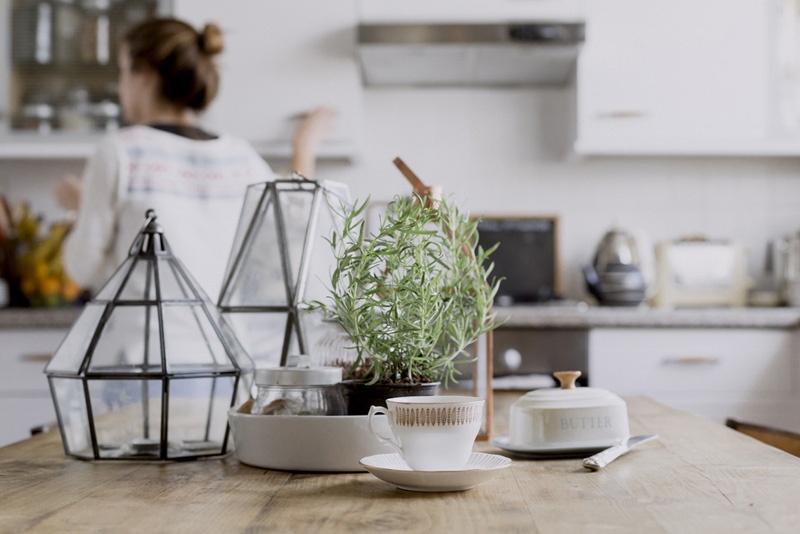
Over the next couple months, most of us will be preparing for the holidays and looking forward to spending time with family and friends.
Because of the colder weather, we’re also likely to be spending more time indoors.
That can mean cozy evenings by the fire, warm cups of cocoa, and sharing tall tales far into the night, but it can also mean an increased risk of exposure to certain toxins around us.
Did you know that as the weather gets colder, it can increase our exposure to some dangerous chemicals? Though it’s always good to be aware of things you may be breathing in or touching that could potentially affect your health, this time of year it can become even more important, since we’re all more vulnerable to bacteria, viruses, and to illnesses in general.
To keep you and your loved ones feeling healthy and happy this holiday season, take a moment to be sure you’re doing your part to cut back on the following.
1. Indoor pollution.
According to the Environmental Protection Agency (EPA), indoor air pollution is among the top five environmental threats to public health.
It gets worse in the cold weather. Not only do we spend more time indoors, but we tend to lock up the windows and seal the vents to cut down on energy costs, which reduces ventilation and makes it more likely toxins will build up in indoor air. We also tend to burn more unhealthy candles and use more air fresheners in the fall and winter months.
There are a number of ways you can reduce your exposure. First, avoid all air fresheners, as they expose you to a lot of unhealthy chemicals. (Read more about that here.) Use only vegetable, soybean, or beeswax candles, open a window when you can, invest in a quality air purifier, and last but not least, use more houseplants! Many naturally soak up dangerous toxins to help you breathe purer air. (Read more about houseplants here.)
2. Outdoor pollution.
Cold weather makes outdoor air pollution worse, too. There are a couple reasons why. First, fireplaces, woodstoves, and idling vehicles create higher levels of particulate matter and carbon monoxide in the air. Cold temperatures and stagnant air can create inversions that trap substances near the ground, where we live.
Be aware of that fact that your exposure could increase. Try not to exercise around high traffic areas, as you’re likely to breathe more exhaust. Get to a park or other natural area, or use an indoor room that’s got a good air purifier. Do your best to avoid sitting in traffic (schedule your commute times to coincide with flowing traffic), and keep windows closed during peak traffic hours and during the late afternoon, when the heat of the day decreases air quality.
3. Triclosan & bleach.
We’re all about reducing germs in the fall, right? We want to avoid catching a cold or the flu. But unfortunately, that means you’re likely to see more soaps around that include triclosan, and you may be tempted to use bleach to reduce germs in your home.
Triclosan is an antibacterial agent present in a number of personal care products, even some toothpastes, but it’s been shown to be an endocrine disruptor and is accumulating in our soils and farm fields. It’s also part of the reason some of our antibiotics don’t work anymore, as it contributes to the formation of “superbugs.”
The FDA has reported that antibacterial products protect no better than regular soap and warm water. Wash your hands frequently, but avoid antibacterial products. Then consider natural bleach alternatives for your home cleaning. Bleach is associated with headaches, respiratory issues, and skin burns, so try things like vinegar, lemon juice, and hydrogen peroxide to kill germs.
4. Dust
Did you know that dust is one of the main sources of toxins in your house? And bad news-dust increases in the fall and winter months.
In fact, dust pollution is more common in the colder periods because the humidity goes down, drying the air, and the soil surface dries up too, increasing levels of suspended particulate matter and respirable particulate matter.
All that dust isn’t good for you. A study by the Silent Spring Institute found 66 hormone-disrupting compounds in household dust, including flame-retardants, home-use pesticides, and phthalates.
I know-housecleaning is no fun, but if you want to reduce the toxins you and your family are breathing in, step up your dusting this fall. Try for twice a week instead of once, for example, and be sure to use a damp cloth so you’re actually absorbing the dust and not just spreading it around.
5. Styrofoam cups
It’s time for hot cocoa, pumpkin latte’s, and all the rest of those yummy warm drinks. Unfortunately, they’re often served in Styrofoam cups.
Polystyrene, which is the plastic used to make Styrofoam, exposes you to styrene, which has been linked to vision and hearing loss, nervous system problems, impaired memory, and more. The amounts are small, and if you use one of these cups maybe once a month, you likely won’t see health problems, but if you’re one of those people who has to get your coffee every morning, your exposure could be too high. Hot beverages, especially, can increase leaching of potentially dangerous chemicals.
Ask your favorite beverage place if they have alternative cups, or bring your own and either use it directly, or pour the beverage into it immediately, to reduce the time spent in the cup.
How do you reduce toxic exposure in the fall months? Please share your tips.

